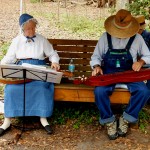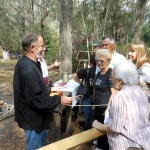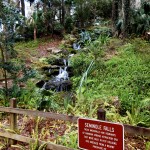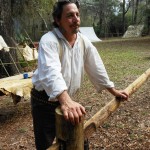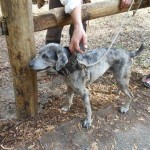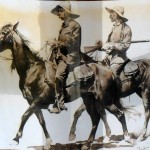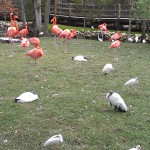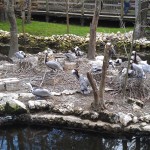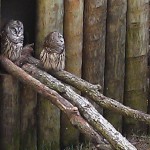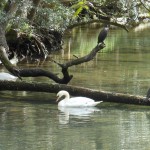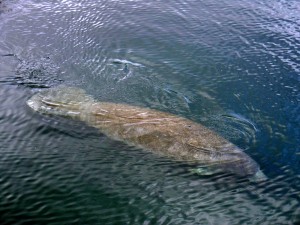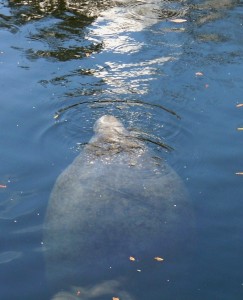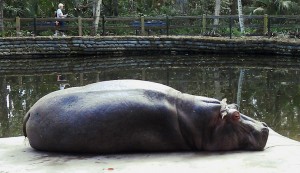Beverly Hills, Florida is located in Citrus County. There are thirteen cities and towns in the county, in addition to another dozen or so subdivisions and neighborhoods. There are also six lakes, seven rivers and innumerable streams, ponds and marshes. Oh, and don’t forget the Gulf of Mexico. No wonder it’s dubbed itself the Water Lovers Florida.
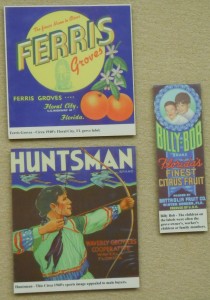
Box labels — notice the “Ferris” Groves!
But there’s one thing in Citrus County you’ll barely find: citrus. It wasn’t always that way, of course; groves abounded in the nineteenth century, and it was near the end of that century (1887) that the county was born, sliced off the top of Hernando County. Six year later, a long hard freeze over the winter of 1893-’94 wiped out the crop, and it never recovered. Three things saved the county: the discovery of phosphate in the ground, the location and climate as a retirement haven, and the heavy tourism influx to enjoy the scenic – and sea-nic — attractions. Among the many festivals are those that honor the Manatee, which hibernate in abundance in its warm sheltered waters; the Cooter, an indigenous large fresh water turtle, and Strawberries. A premier attraction is the head of the Withlacoochee State Trail, a 46 mile long route of the old Atlantic Coast Line Railroad that is now a premier hiking and biking trail.
The county seat is Inverness, a small, mostly urban city with approximately 7,500 citizens covering 8 square miles. It was incorporated in 1917 and was named by a lonely Scotsman who viewed the shores of its largest lake, Tsala Apopka, as reminiscent of the lochs and moors of his native land.
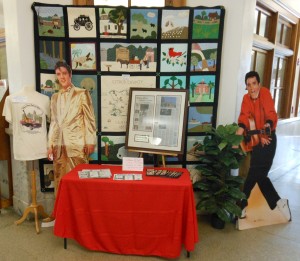
Elvis in “Follow That Dream”
In 1961, Inverness had a famous visitor: Elvis! He brought along a large entourage and trucks full of equipment to film one of his most successful movies, Follow That Dream. Originally written as a story of New Jersey sharecroppers, Hollywood decided that a Florida version would be more attractive. By the time Elvis left the building – and the city – he’d shot enough scenes in the Old Courthouse to fill 10 minutes of the final cut.
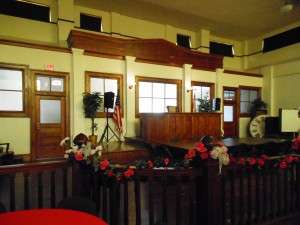
Old Courthouse Courtroom
That selfsame Old Courthouse dominates the town square and is not the Heritage Museum. Originally constructed in 1912, the Courthouse gave way to a modern update one block away in 1978. The Old Courthouse became the headquarters of the Citrus County Historical Society in 1985. In that interim, it has suffered many awful modernizations, and the new occupants set a goal to restore its original grandeur.
Elvis, again, came to the city’s rescue — indirectly. By reviewing those final scenes in the movie, the restoration committee could see first-hand what the building looked like then. Coupled with archival plans and specs, they were able to produce details that otherwise would have been lost. After $2.5 million and 7 years, the project was unveiled in October, 2000. Not surprisingly, Inverness holds an Elvis Festival every year. The 100th anniversary in 2012 was the inaugural year of a new, home-grown musical, When Elvis Came to Town. Even with added performances, the show was repeatedly sold out. But it ran again in late April at this year’s festival and will, I’m sure, continue indefinitely.
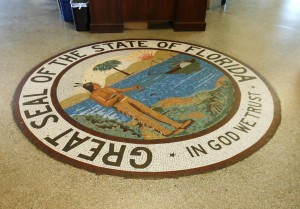
State Seal in the floor
Back to the Courthouse. It is now a combination of historical society offices and exhibits. The old Tax Appraiser/Collector Office now holds a permanent exhibit called A Long Way Home, chronicling the history of the County through the 19th and 20th centuries. The Sheriff’s Office holds Footprints in Time, a look at La Florida dating back to the end of the last Ice Age and highlighting the effect of each of its successive waves of occupants. In another room, the three Seminole Wars, between ca. 1814-1858 receive significant attention and salutes the Natives’ courage. One of the exhibits tells a prehistoric story through dialog between two animated creatures; it was produced by a local middle school class.
A rotating gallery featured an exhibition called Humanity Beyond the Barbed Wire: Hitler’s Soldiers in the Sunshine State. On loan from the Florida Holocaust Museum, it tells the story of the 10,000 German POW’s (out of nearly 400,000 across the U.S.) that were housed in 26 Florida camps. It graphically displays the bifurcation between the Nazi propaganda of hate and the actual humane treatment provided by the captors. In fact, many of the Deutschlanders actually had employment outside the compounds and later refused repatriation.
-
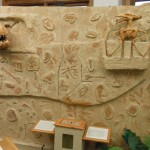
-
Prehistoric history animated by a student project
-
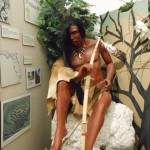
-
Seminole Warrior
-
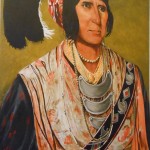
-
Seminole Chief
-
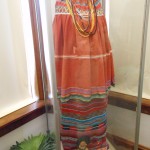
-
Seminole garb


